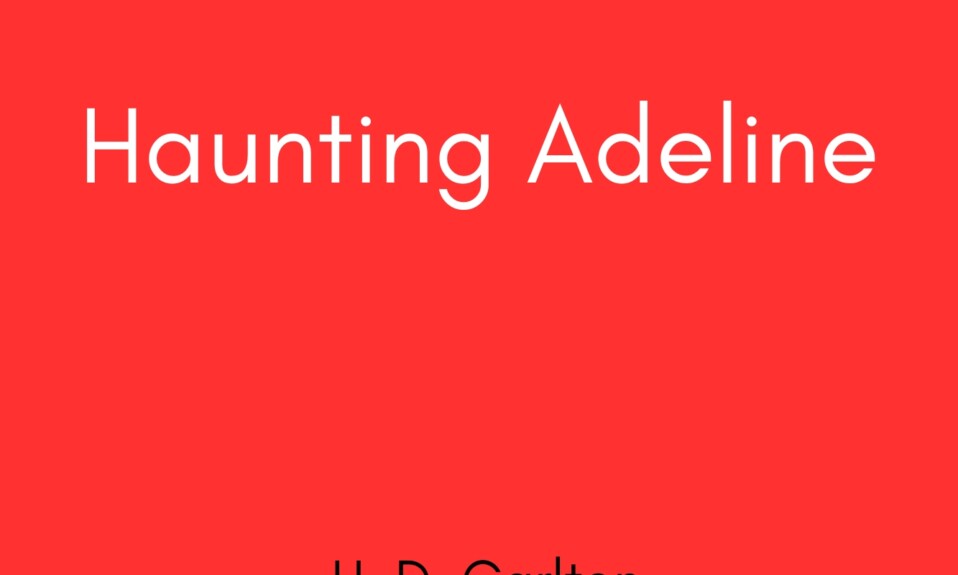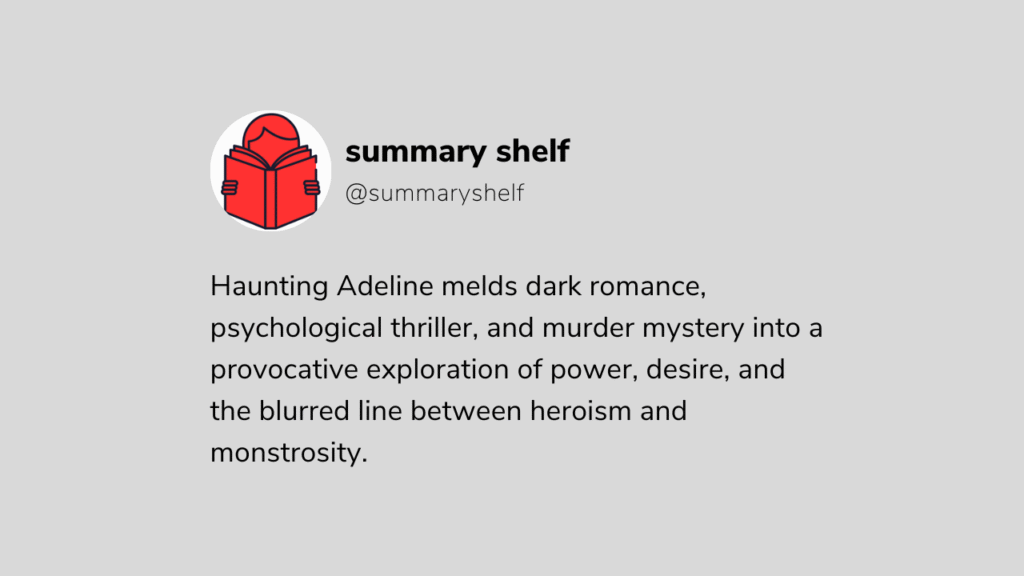
Haunting Adeline is a dark romance thriller that follows Adeline Reilly, a celebrated writer who moves into her late grandmother’s haunted mansion.
🖤 Want to dive into this chilling, seductive page-turner yourself?
👉 Grab Haunting Adeline on Amazon
As she investigates her family’s murky past—including her great-grandmother Gigi’s unsolved murder—she becomes the target of a mysterious stalker, Zade Meadows, a charismatic anti-trafficking vigilante. Their twisted “cat-and-mouse” dynamic propels the narrative through moral quandaries, psychological tension, and a perilous blend of fear and desire.
Prologue to Chapter 6
Key Characters Introduced:
- Adeline Reilly: Socially anxious writer with a curious, resilient streak; haunted by suicidal thoughts.
- Zade Meadows (Z): Enigmatic vigilante who combats human trafficking; displays both protective instincts and predatory behavior.
- Supporting Cast: Friends Daya, Sarina, Jay, Ruby; deceased matriarchs Gigi (great-grandmother) and Serafina (grandmother).
Major Themes & Events:
- Family Legacy: Adeline uncovers Gigi’s diaries hidden in the walls, foreshadowing revelations about the mansion’s history.
- Inner Conflict: Torn between her mother Sarina’s insistence on normalcy and the wild personalities of Gigi and Serafina.
- Stalker Emergence: Zade breaks into Adeline’s home, leaves roses, and adopts the moniker “little mouse,” establishing a threatening yet magnetic presence.
- Moral Ambiguity: Zade’s crusade against child trafficking contrasts sharply with his willingness to abduct or harm Adeline.
Chapters 7–12
Rising Tension:
- Adeline attacks Zade in self-defense; Zade murders Arch to eliminate a rival, flooding the house with flowers.
- Obsessed with the darkness and desire?
👉 Read the full book now on Amazon - The pull between fear and attraction intensifies.
Character Dynamics:
- Zade’s Control: Uses infantilizing nicknames and threats to assert dominance.
- Adeline’s Agency: Learns to manipulate perceptions, echoing her grandmother Gigi’s flirtations with danger.
Thematic Focus:
- Consent vs. Arousal: Adeline’s body responds to fear, blurring the line between violation and desire.
- Power Struggles: Zade punishes perceived transgressions, mirroring the violence of the traffickers he hunts.
Chapters 13–20: Dark Turning Point
Pivotal Dilemma:
- Zade forces Adeline into nonconsensual acts, challenging notions of consent and bodily autonomy.
- Adeline’s dissociation: her physical arousal is separate from her mental resistance.
Moral Contrast:
- Zade as both savior of trafficking victims and predator of Adeline.
- His rationalizations—”I know you better than you know yourself”—underscore his warped self-justification.
Plot Developments:
- Introduction of Max as an external threat.
- Adeline and Zade collaborate on solving Gigi’s murder, juxtaposing romance and detective intrigue.
Chapters 21–26: Shifting Alliances
New Antagonist: Mark Williams, charismatic leader of an ouroboros cult; exposes cult’s blood rituals.
Character Evolution:
- Zade rebrands himself as Adeline’s protector, despite orchestrating her peril.
- Daya’s divided loyalties create friction; she oscillates between friend and enabler.
Themes:
- Performance as Deception: Both Mark’s political charisma and Zade’s protective front mask darker motives.
- Balance of Morality: Adeline rationalizes Zade’s atrocities in light of his anti-trafficking mission.
Chapters 27–34: Vulnerability & Reflection
Emotional Revelations:
- Zade’s facade cracks, revealing grief over lost children; Adeline finds his vulnerability seductive.
- Adeline admits deriving arousal from fear, echoing Gigi’s attraction to danger.
Moral Mirror: Sibby, an abused serial killer, reflects Zade’s contradictions—understanding trauma but exploiting it.
Conspiracy Echoes: The ouroboros cult parallels QAnon myths, though framed within a Christian-Eternal Rebirth context.
Chapters 35–42: Resolution & Cliffhanger
Gigi’s Murder Solved: Frank, driven by envy, is unmasked as the killer; familial guilt and secrecy explained.
Romantic Reckoning:
- Adeline embraces a consensual relationship with Zade, despite past rapes—hinting at Stockholm Syndrome.
- Zade confesses their intimacy as a “church,” yet still fails to grasp true consent.
Teasers for Sequel:
- Zade’s failed raid on “Savior’s” operation.
- Adeline’s abduction by a mysterious assailant, setting up Hunting Adeline.

Central Themes & Questions
- The Balance of Morality: Can a character’s noble mission justify personal atrocities?
- Consent vs. Arousal: How does the novel challenge traditional notions of romance and agency?
- Performance as Deception: In a world of vigilantes and cultists, who truly wears a mask?
- Family Legacy & Trauma: How do past secrets shape Adeline’s identity and choices?
Haunting Adeline melds dark romance, psychological thriller, and murder mystery into a provocative exploration of power, desire, and the blurred line between heroism and monstrosity.
If you enjoyed this summary of Haunting Adeline by H.D Carlton you may also like:
- The Night She Disappeared by Lisa Jewell
- Regretting you by Colleen Hoover
- All Good People Here by Ashley Flower
Disclosure: This page contains affiliate links. As an Amazon Associate, I earn from qualifying purchases.



